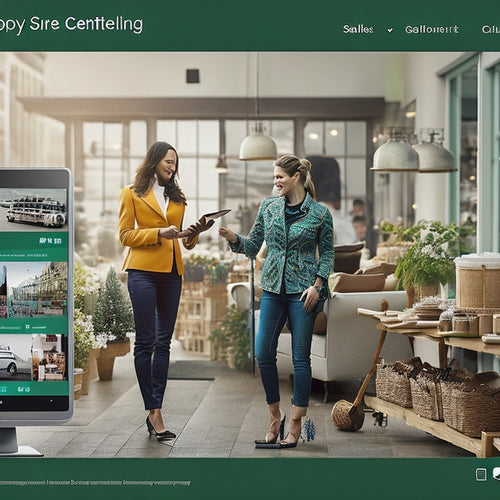Finding the Right Influencers for Your Brand
Share
In the rapidly evolving world of digital marketing, finding the right influencers for your brand has become crucial for success.
This article explores the benefits of collaborating with influencers and highlights key factors to consider when choosing them.
Additionally, it delves into the power of shoppable videos and provides strategies for identifying the most suitable influencers.
By measuring and analyzing the impact of influencer marketing, brands can effectively navigate this dynamic landscape and cultivate a sense of belonging among their target audience.
- Aligning brand values with influencer content is important for building trust and credibility with the audience.
- Thorough research and analysis, considering audience demographics and evaluating content quality, are factors for influencer selection and maximizing impact.
- Measuring engagement rates through likes, comments, shares, and views helps assess the effectiveness of influencer campaigns.
- Utilizing ROI and data analysis techniques, such as analyzing social media platform data and assessing sales data, can help evaluate the success and profitability of influencer marketing.
Benefits of Collaborating with Influencers
Collaborating with influencers can provide numerous advantages for brands seeking to expand their reach and engage with a wider audience. Influencer marketing success is evident in the ability of influencers to create authentic content that resonates with their followers. By leveraging an influencer's established credibility and trust, brands can tap into a ready-made audience who are more likely to be receptive to their message.
One of the key benefits of collaborating with influencers is building brand credibility. Influencers are seen as experts or authorities in their respective niches, and their endorsement can lend legitimacy to a brand. When an influencer recommends or promotes a product, it creates a sense of trust among their followers, leading to increased brand loyalty and potential sales.
Furthermore, collaborating with influencers allows brands to access niche markets that may be otherwise difficult to reach through traditional advertising channels. Influencers have built loyal communities centered around specific interests or demographics, allowing brands to target their messaging more effectively. This targeted approach not only increases the chances of reaching potential customers but also helps foster a sense of belonging within these communities.
In summary, collaborating with influencers offers several benefits for brands, including influencer marketing success and building brand credibility. By tapping into an influencer's credibility and established audience, brands can expand their reach and engage with new customers while also strengthening their reputation within specific niche markets.
Key Factors to Consider when Choosing Influencers
When choosing influencers to collaborate with, there are several key factors that should be considered.
Firstly, relevance to your target audience is crucial as the influencer's content should align with your brand and resonate with your target market.
Secondly, engagement and authenticity are important indicators of an influencer's effectiveness in connecting with their audience and generating genuine interest.
Lastly, evaluating the influencer's past collaborations and performance can provide insights into their ability to deliver results and meet expectations.
By carefully considering these factors, brands can make informed decisions when selecting influencers for partnerships.
Relevance to your Target Audience
To ensure the effectiveness of influencer marketing, it is crucial to consider the relevance of potential influencers to your target audience. The success of influencer marketing lies in the ability to connect with the right audience and create a sense of belonging.
Research shows that consumers are more likely to engage with content from influencers who align with their interests, values, and aspirations. When influencers resonate with your target audience, they can effectively communicate your brand message and drive conversions.
Choosing influencers who have a similar demographic profile as your target audience can also enhance trust and credibility. By selecting influencers who are relevant to your target audience, you can maximize the impact of your influencer marketing campaigns and achieve higher levels of engagement and conversion rates.
Engagement and Authenticity
Engagement and authenticity are key factors that contribute to the success of influencer marketing campaigns.
When it comes to engagement, brands need to consider the various metrics such as likes, comments, shares, and click-through rates. These metrics provide insights into how well the content is resonating with the audience and whether they are actively engaging with it. High levels of engagement indicate a strong connection between the influencer and their followers, which can lead to increased brand awareness and customer loyalty.
Authenticity is equally important as it establishes trust between the influencer and their audience. Consumers today seek genuine experiences and connections with brands they follow. Influencers who are able to authentically incorporate products or services into their content tend to have a greater impact on their followers' purchasing decisions.
To ensure both engagement and authenticity, brands should carefully select influencers whose values align with theirs. Building long-term partnerships based on mutual trust can result in more successful influencer marketing campaigns that drive meaningful results for brands.
Past Collaborations and Performance
Past collaborations and performance can serve as valuable indicators of an influencer's effectiveness in driving brand awareness and customer loyalty. When evaluating potential influencer partnerships, it is important to examine their past collaborations and the outcomes achieved. Success metrics such as engagement rates, reach, conversion rates, and sales generated can provide insights into an influencer's ability to connect with their audience and drive desired actions.
Analyzing the performance of previous campaigns can help identify patterns or trends that may be indicative of a successful partnership. Additionally, examining the alignment between the influencer's content style and brand values can further enhance the likelihood of a fruitful collaboration.
By considering past collaborations and performance data, brands can make more informed decisions when selecting influencers for their shoppable videos, ultimately increasing their chances of achieving positive results.
The Power of Shoppable Videos
The effectiveness of shoppable videos lies in their ability to seamlessly integrate product information and purchasing options within the video content. Shoppable videos are a form of interactive shopping that allows viewers to make purchases directly from the video itself, eliminating the need to navigate to a separate website or store. This integration enhances the user experience by providing convenience and reducing friction in the buying process.
Video marketing has become increasingly popular in recent years, with studies showing that consumers prefer video content over other forms of advertising. Shoppable videos take this a step further by allowing viewers to not only engage with the brand's message but also make purchases without leaving the video player.
Furthermore, shoppable videos have been proven to drive higher conversion rates compared to traditional e-commerce methods. According to research conducted by Wyzowl, 84% of consumers have been convinced to buy a product after watching a brand's video.
Incorporating shoppable videos into influencer marketing campaigns can be highly effective. By leveraging influencers' reach and credibility, brands can showcase their products in an engaging way while also providing viewers with a seamless path to purchase. This combination of influencer endorsement and interactive shopping creates an immersive experience for consumers and increases the likelihood of conversions.
Strategies for Finding the Right Influencers
One effective approach to identifying suitable influencers for partnership involves conducting thorough research and analysis of their online presence, including their audience demographics, content quality, and engagement rates.
Influencer outreach has become an integral part of brand marketing strategies as it allows companies to tap into the influencer's existing audience and leverage their influence to promote products or services. When selecting an influencer, it is crucial to consider their target audience demographics and ensure that it aligns with the brand's target market. This can be done by analyzing the influencer's followers' age, gender, location, and interests.
Content quality is another important factor to evaluate when choosing an influencer. Brands should look for influencers who consistently produce high-quality content that resonates with their target audience. By reviewing past posts and videos, brands can assess the influencer's ability to create engaging and authentic content that aligns with their brand values.
Engagement rates are a key metric in measuring an influencer's effectiveness in reaching and connecting with their audience. Brands should analyze metrics such as likes, comments, shares, and views to gauge the level of engagement an influencer generates. Higher engagement rates indicate a more active and involved community of followers who are likely to respond positively to sponsored content.
In conclusion, finding the right influencers for your brand requires thorough research and analysis of various factors including audience demographics, content quality, and engagement rates. By carefully considering these aspects during influencer selection process brands can maximize the impact of their partnerships and effectively reach their target audience through shoppable videos.
Measuring and Analyzing the Impact of Influencer Marketing
To accurately assess the effectiveness of influencer marketing, it is essential to measure and analyze its impact through various metrics and data analysis techniques. One key metric used to evaluate the success of influencer marketing is the return on investment (ROI). This metric allows brands to determine if their investment in influencer partnerships is generating a positive financial return.
Tracking influencer campaigns involves monitoring key performance indicators (KPIs) such as engagement rate, reach, impressions, and conversions. By analyzing these metrics, brands can gain insights into how well their influencer campaigns are resonating with their target audience and driving desired actions.
Data analysis techniques play a crucial role in understanding the impact of influencer marketing. These techniques involve analyzing data from social media platforms, website analytics, sales data, and customer feedback. By utilizing advanced analytics tools and technologies, brands can identify trends, patterns, and correlations that provide valuable insights into the effectiveness of their influencer partnerships.
Measuring and analyzing the impact of influencer marketing not only helps brands understand the ROI of their campaigns but also allows them to make informed decisions about future collaborations. By continuously monitoring and evaluating campaign performance using relevant metrics and data analysis techniques, brands can optimize their influencer strategies for maximum impact.
Frequently Asked Questions
How can I optimize my shoppable videos to ensure maximum engagement and conversion?
To optimize shoppable videos for maximum engagement and conversion, focus on clear call-to-actions, compelling visuals, and concise messaging. Incorporate data-driven insights to identify the most effective elements and continuously test and refine your videos to improve performance.
Are there any legal considerations or guidelines I need to be aware of when collaborating with influencers?
Legal considerations and FTC guidelines are important when collaborating with influencers. Compliance with disclosure requirements, avoiding deceptive practices, and ensuring transparency in sponsored content are essential to maintain trust with consumers and adhere to legal standards.
What are some effective ways to negotiate and establish partnerships with influencers?
Effective negotiation strategies are crucial for building strong partnerships with influencers. By conducting thorough research on the influencer's audience, engagement rates, and past collaborations, brands can make data-driven decisions that ensure a mutually beneficial relationship without personal biases or preferences.
How can I track and measure the ROI of my influencer marketing campaigns?
Tracking ROI and measuring success in influencer marketing campaigns can be achieved by using various metrics such as engagement rate, conversion rate, and cost per acquisition. These data-driven measurements provide valuable insights into the effectiveness of the campaign in generating returns for the brand.
Are there any specific social media platforms or channels that are more effective for influencer marketing and shoppable videos?
Instagram and TikTok are popular social media platforms for influencer marketing, while YouTube and Facebook are effective channels for shoppable videos. These platforms provide opportunities for brands to reach a wide audience and drive engagement with their products or services.
Related Posts
-

Essential Tools for Ecommerce Digital Product Creators
As an ecommerce digital product creator, you know that having the right tools is pivotal to success. You'll need esse...
-

How Do I Make My Shopify Store Profitable
This article aims to provide strategic insights and practical tips for enhancing the profitability of Shopify stores...

